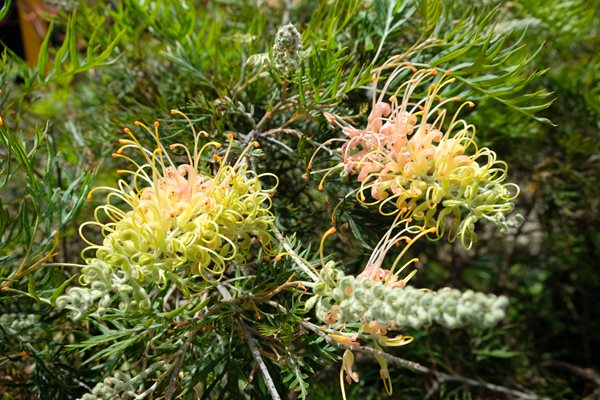
Consider planting native flowering shrubs to provide valuable, nectar- laden blooms for local wildlife through autumn and winter. Banksia cultivars like ‘Birthday Candles’ and ‘Honey Pot’, Grevillea ‘Peaches and Cream’ and native hibiscus (Alyogyne hueguelii) are fabulous choices.
Tired hydrangeas can be revived by drastically pruning them back by one-third. Remove weak branches. Prune healthy stems back to a pair of healthy buds.
Treat mum to a potted flowering plant for Mother’s Day. Moth orchids, cyclamens, spider-flowered chrysanthemums or anthuriums are lovely indoor choices. Pair it with a liquid fertiliser to help prolong the floral display.
Prepare garden beds for planting bare-rooted roses. Dig in plenty of compost or aged manures and fork in well. Visit local nurseries or browse online catalogues to purchase bare-rooted specimens.
Protect tender plants from early frosts with frost cloth (available in rolls from nurseries and hardware stores) supported on stakes or frames.
Reduce watering indoor plants as growth slows. Water only when the soil mix is near dry. To test, insert your index finger to 2.5-5cm into the mix – if it’s moist, leave watering for a few days but if it’s dry, then water well.
Move cymbidiums into a sunny spot and feed monthly with Neutrog's Strike Back for Orchids to encourage prolific flowering spikes in September.
Don't forget to plant tulips this month, as well as any late plantings of spring- flowering bulbs that may have missed an earlier planting window.
Sow a crop of snow peas to enjoy over the cooler months. Choose a spot in full sun with shelter from strong winds. Ensure the soil is well draining and enriched with organic matter, like Seamungus before planting. Sow seeds direct and water in well. Peas are vigorous growers, so insert stakes or install a sturdy wire trellis for them to climb.
Got plants in the wrong spot? Now that the weather has cooled, it’s safe to move plants to a more desired location. Use a seaweed solution to reduce transplant shock. Deciduous plants are best left in place until they are dormant in winter.
Keep a steady supply of salad greens going by planting a mix of spinach, lamb's lettuce, mustard, and cress. Microgreens on a sunny windowsill indoors are also a great addition to salads.
This mild weather makes working in the garden a delight. Roll up those sleeves and start the projects you have been avoiding, like refurbishing outdoor furniture, building a pergola, creating new garden beds or laying a new path.
If your peach, nectarine or almond trees suffered from the dreaded leaf curl disease last year, spray trees at leaf fall with liquid copper fungicide. You will need to spray again at budswell.